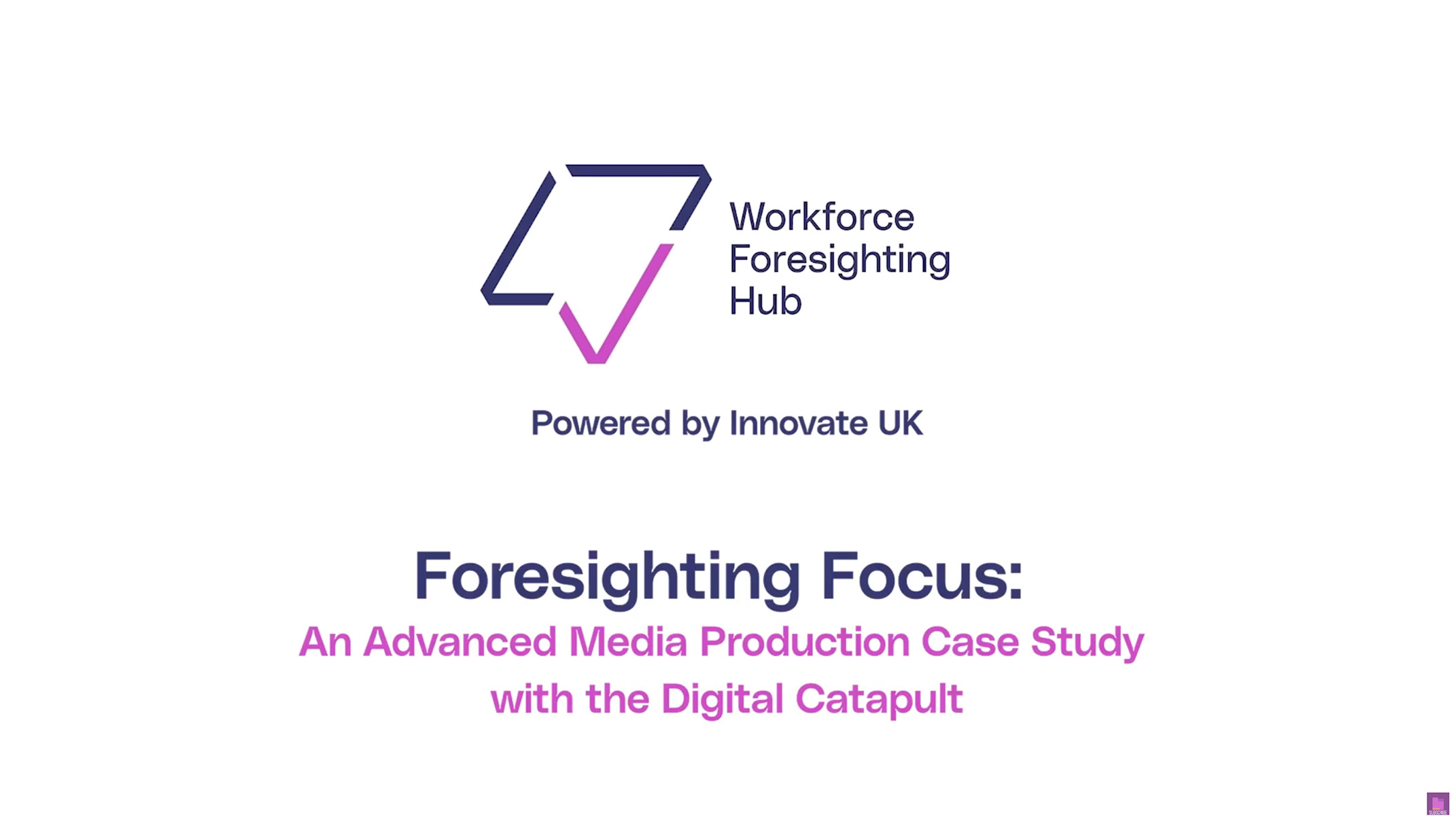Digital Catapult is an organisation that helps businesses grow by applying deep tech. It partners with government, industry and academia to find powerful solutions that benefit the UK.
The Catapult is comprised of nearly 300 innovators across London, the South West, North East and Northern Ireland. It’s been supported by more than 3,000 companies since 2018 and offers services including consultancy, research and testbed facilities.
An early adopter of workforce foresighting
Digital Catapult published two key foresighting reports in 2023 and 2024:
- Advanced Media Production: Foresighting skills for the future
- AI image generation and maintenance: understanding future skills
These reports saw Digital Catapult partner with Innovate UK’s Workforce Foresighting Hub to identify the skills of the future required to support the UK’s creative industries.
Equipping the workforce with the right skills
In 2023, Digital Catapult engaged in its first workforce foresighting cycle, which focused on Advanced Media Production – an innovative methodology gaining traction across various sectors, combining technologies like motion and camera tracking, LED screens, and real-time rendering engines. It enables the capture of live-action and advanced media elements, allowing creative teams to visualise final shots in real time rather than relying on lengthy post-production processes.
The cycle harnessed expertise from across education and industry – those who were interested in the future requirement that this convergence of technology and relevant industries will create.
Ashmita Randhawa, Director of R&D at Digital Catapult North East Tees Valley, said the opportunity to take part came at the perfect time: “This coincided with us just launching our first studio up in Gateshead. So, we were able to not just talk to companies about the technology, but equally the twin side of that technology adoption which is that capability building.”
Target 3D, partners of the Digital Catapult, were also involved in the cycle. Their Co-founder and Managing Director said the cycle was much needed: “There was definitely a convergence of technologies and an appetite which meant that people were starting to utilise large LED volumes and small LED volumes to create productions.
“What resulted from that was a realisation that whilst this technology was there and leverageable, the people who had the skills, the expertise to make this all work, were all sought after and snapped up by the big studios. So, there’s a necessity for all industries to understand how they can get the right people or train the right people for the future.”
The report ultimately identified sixteen Future Occupational Profiles required across different areas to ensure the industry can keep up with advancing technology. These ranged from production assistants to leadership roles. It also identified the key skills needed, such as graphic design, logistics and the use of technical drawing software.
One year on the sector impact is clear
Digital Catapult’s Advanced Media Production cycle is already having a tangible impact on those within the sector:
- The findings have been used to inform the design of and thinking in education programmes in development.
- The process is underway to identify and reskill those with transferrable skills from other sectors to full high-demand roles.
- There’s been a wide range of regional and national engagement with educators, awarding bodies and employers.
Ashmita Randhawa says it was a wise decision to undergo the cycle: “It was the first time that we were being quite so deliberate in looking ahead in terms of the skills requirement and the capability requirement.
“We took the findings back to stakeholders and asked if this made sense and whether these were the types of things we need to be thinking about and the immediate feedback was yes, this all resonated with us.”
Workforce foresighting supports sector growth
Rapid technological advancement has led to huge growth in the creative industries, and this is only set to increase. The 2023 Creative Industries Sector Vision aims to grow the creative industries by an extra £50 billion by 2030. This is in addition to creating one million extra jobs.
Following the success of the first workforce foresighting cycle by Digital Catapult, a second one was undertaken last year to ensure that the sector is well equipped for this predicted growth. This cycle delved into AI tools for image asset creation and augmenting existing assets.
During the cycle, the team identified opportunities in several areas to address changes required to the current education provision to ensure that the sector has a workforce prepared for the challenges that AI could pose. The findings highlighted a need for immediate and coordinated efforts by educators, employers, and stakeholders to bridge this gap and support the UK’s ambitions to lead in the screen economy.
What’s next?
Digital Catapult has published a third workforce foresighting report, this time centred on the development and implementation of Quantum Sensing technologies for monitoring transport. This provides further invaluable insights and actions for the industry to absorb.
It’s clear to see that being an early adopter of workforce foresighting has had a range of benefits for Digital Catapult and will continue to do so for many years to come.


